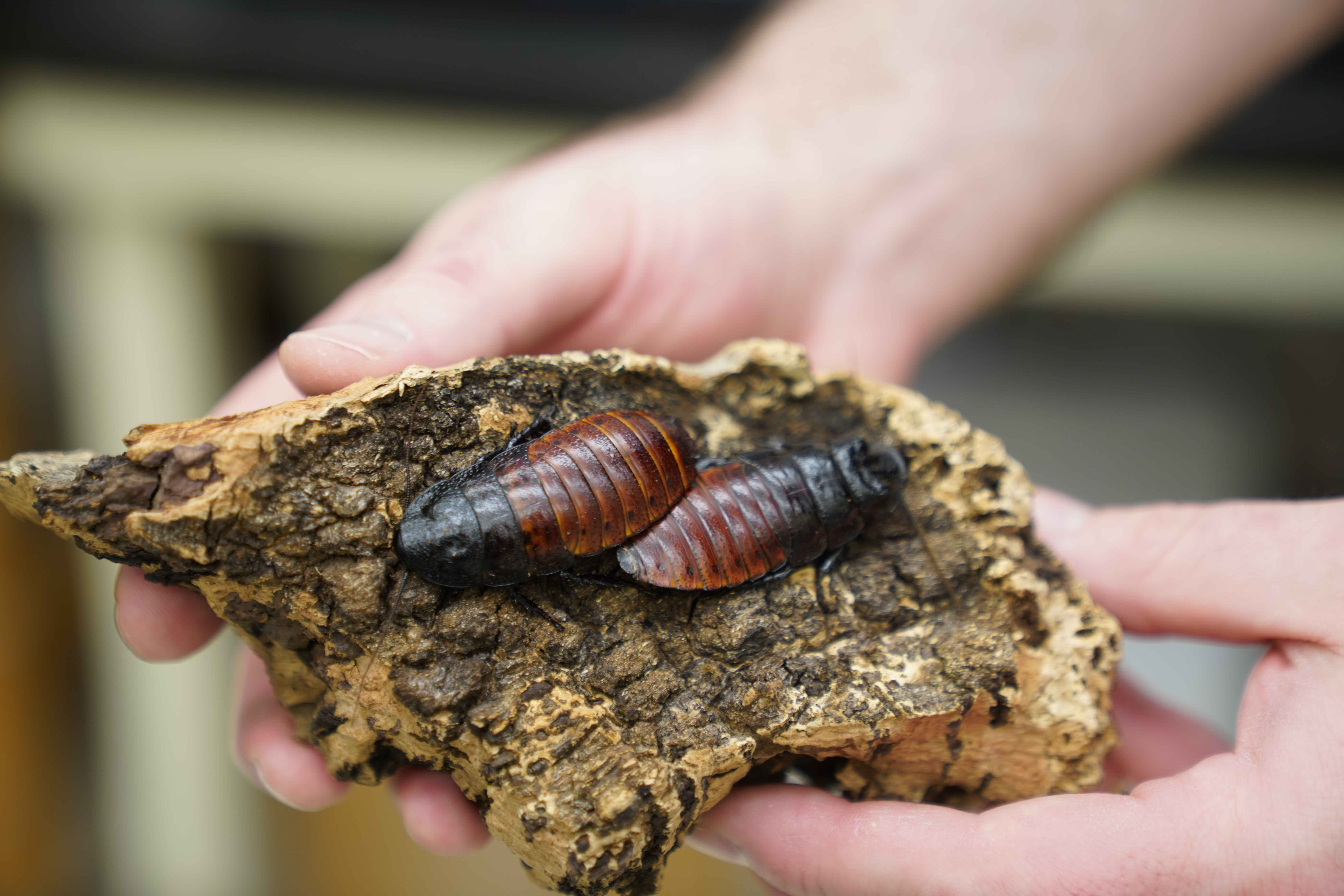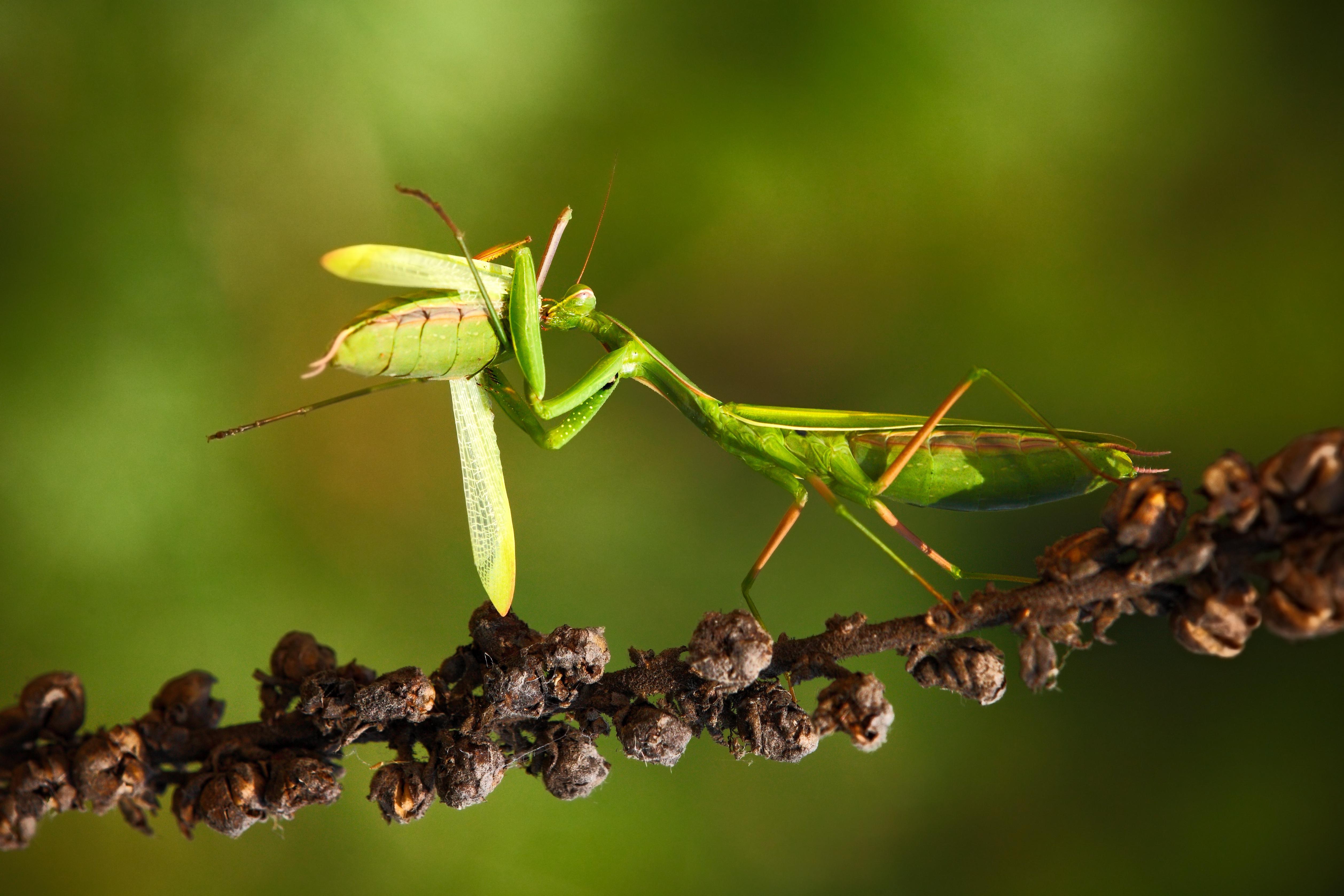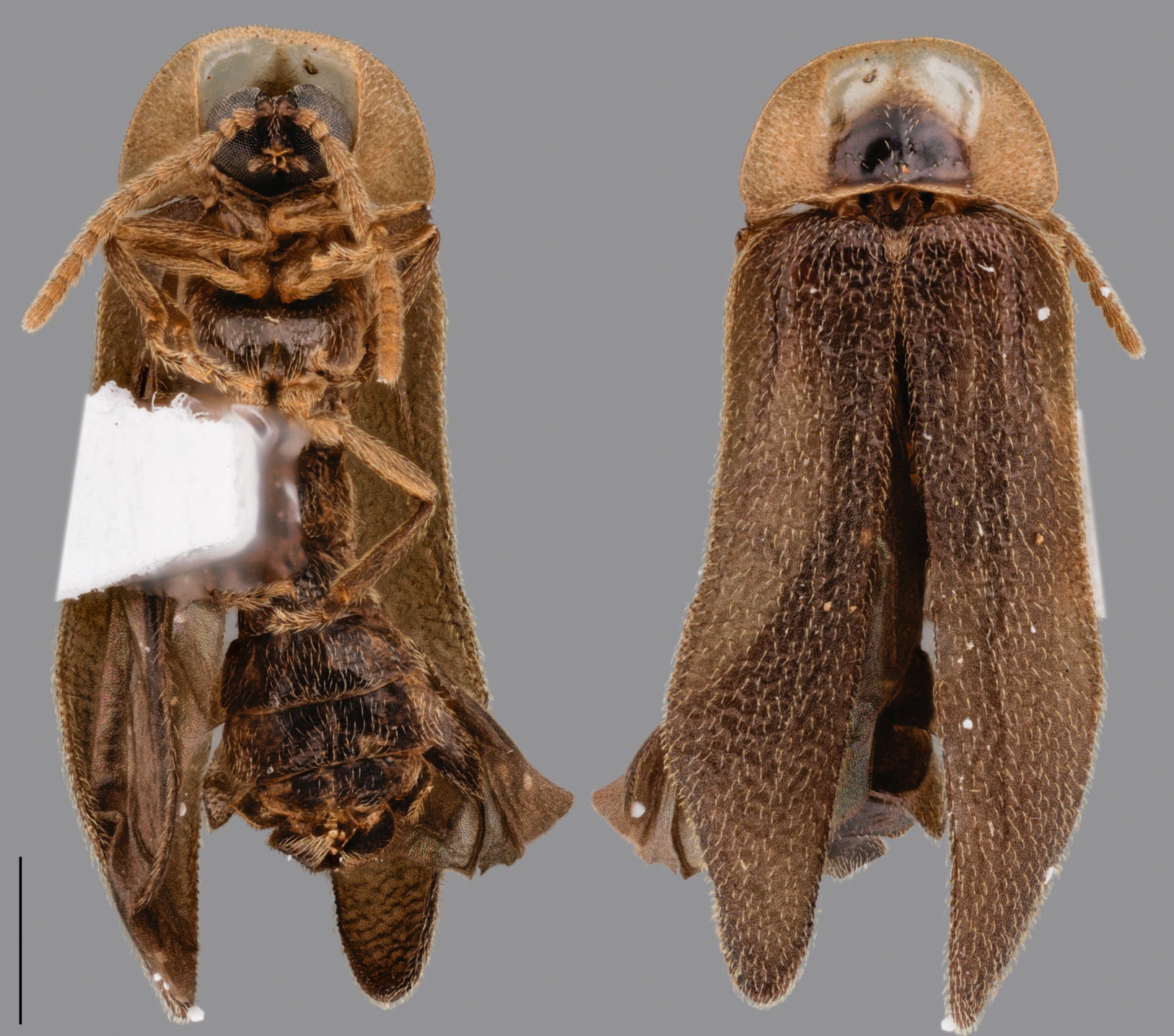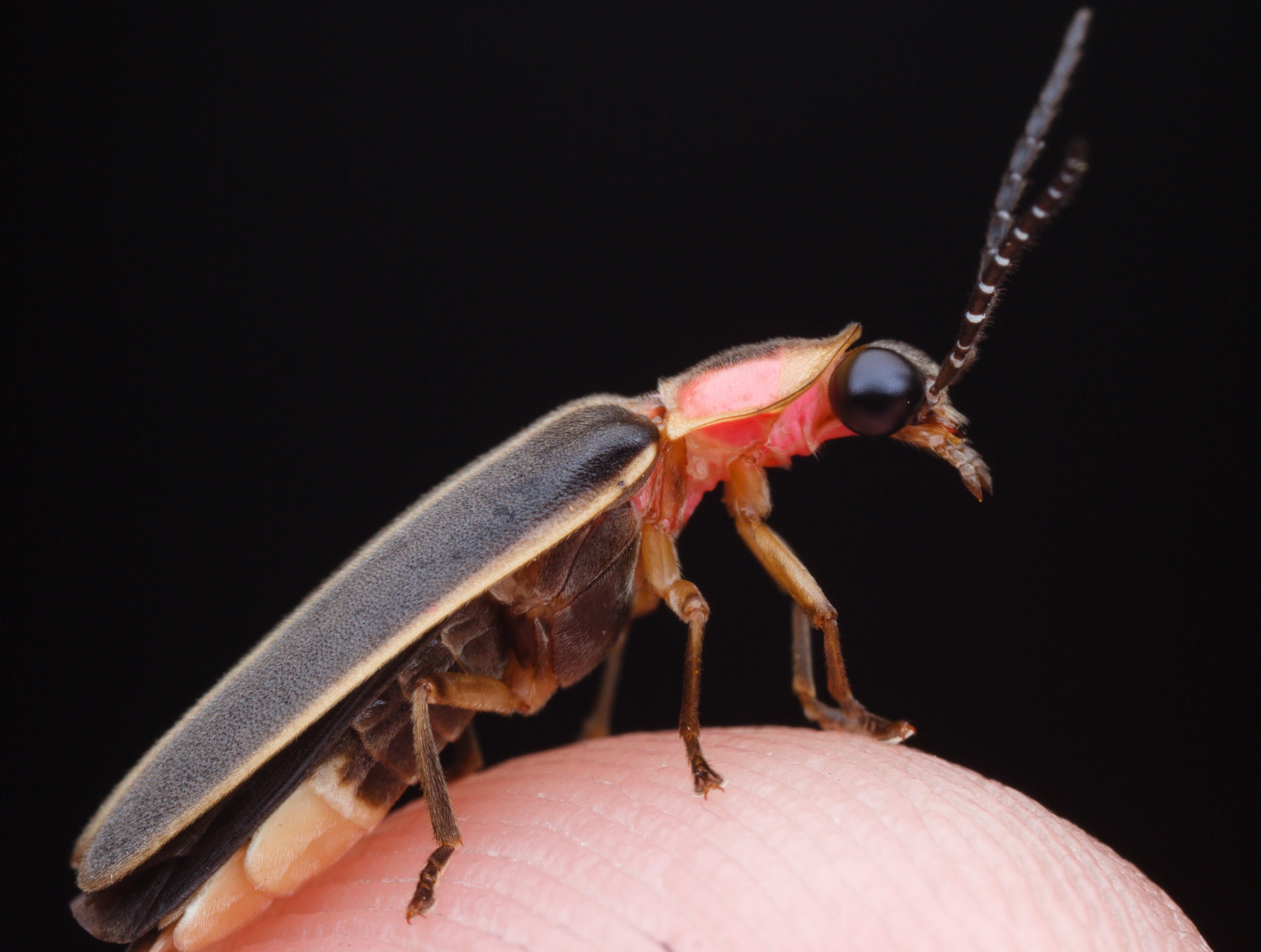How creepy crawlers court
While couples buy rose bouquets, make dinner reservations and dress up for date night, researchers in Purdue Entomology are putting another twist on Valentine’s Day. Chris Wirth, Purdue Entomological Research Collection manager shares some of the world’s strangest, yet captivating bug mating rituals.

Music
Perhaps you’ve cringed at Ryan Gosling serenading Margot Robbie with an acoustic Matchbox Twenty rendition in The Barbie Movie or swooned over a young John Cusack blasting a Peter Gabriel song outside a window in Say Anything. But if you listen closely to that famous Say Anything scene, you’ll hear crickets producing their own love song in the background.
Male crickets, grasshoppers and katydids, members of the insect order Orthoptera, rub their wings and legs together in a similar fashion to a musician playing the violin, like a string quartet at a fancy dinner. The crickets’ familiar summer night noise and grasshoppers’ low buzz attract female mates.

And that boombox in Say Anything? There’s something similar in the bug world, too. Male cicadas have a speaker-like structure located on their abdomen to produce the sound most Indiana residents hear on hot days. This high-pitched buzz attracts females, who make clicking noises with their wings when they are ready to mate.
“There’s the larger, green annual cicada that we hear every year, but there are also periodical cicadas that emerge every 13 or 17 years, depending on the species,” Wirth said. “This year, two periodical cicada broods will co-emerge, so in some parts of the Midwest you can see lots of cicadas this summer.”
In the Boiler Bug Barn, some insect mating calls may be heard year-round. One such sound is made by hissing cockroaches.
“Male hissing cockroaches hiss not only when they’re threatened or competing with other males, but also in courtship,” Wirth said. “This noise is softer and more repetitive, differing from their sudden, loud defensive or combative hisses.”

Giving Gifts
For humans, a box of chocolates makes for a delicious Valentine’s Day gift. For some insects, it’s a protein globule—and sometimes, even their mate itself.
Although it may seem morbid, insect cannibalism serves an important purpose. Females need a source of protein after mating to lay eggs, and often, smaller males are a ready-made meal.
The female praying mantis is notorious for cannibalizing the male after mating. However, this behavior has only been observed in a few species of praying mantis, and even in those species, males are not always eaten. Factors like male body size and even wind conditions can affect cannibalization and, interestingly, so can gift-giving.

“Some male arthropods will bring what we call a ‘nuptial gift’ to induce mating and reduce the probability that they become the next meal,” Wirth said. “This gift might be food, or in some cases, a proteinaceous ‘globule’ brought to the female.”
Male nursery web spiders wrap gifts of prey in their silk webbing to present to the females. Not only does this lower the likelihood that the female will eat the male, but it can also improve fertilization success.
Dancing
Worried that your two left feet on the dance floor might deter a second date? At least you’re not an arachnid.
Male peacock spiders, native to Australia, put on a show for female mates, but the performance must be perfect. The spider raises its brightly colored, scaly abdomen and spreads it out in a fan like a peacock, giving it its name, and begins its routine. It’s a dangerous dance, because just like some species of mantis and other spiders, the female could reject the advances and instead use the male as a food source. Even if the advances are accepted, the female may eat the male anyway.

While these displays are most well-known in in tropical spiders, some local species of jumping spiders wave their legs and abdomen around in this dance-like display to entice females. Jumping spiders are visually oriented predators, and with a reliance on vision comes a propensity to develop complicated rituals.
“It’s a remarkable display,” Wirth said. “They’re some of the most beautiful arthropods, and as an entomologist, I think it really highlights the importance of studying these behaviors and observing species in their natural habitats.”
 Looking for Love
Looking for Love
If you’re still looking for love on Valentine’s Day, don’t feel alone. Besides providing a spectacular sight for humans on summer nights, fireflies use their lights to search for mates.
Fireflies are a type of beetle, but despite the name, not all use light to communicate. The ones that do have semi-transparent segments at the tip of their abdomen with light organs. Different species have different flash and flight patterns that are used to locate potential mates.
 “One example of this is the shadow ghost firefly,” Wirth explained. “Females are wingless, and they flash, but the males don’t. They’re tiny little things, only about five millimeters long, and the males have these cartoonish-looking eyes.” (Photo from Chris)
“One example of this is the shadow ghost firefly,” Wirth explained. “Females are wingless, and they flash, but the males don’t. They’re tiny little things, only about five millimeters long, and the males have these cartoonish-looking eyes.” (Photo from Chris)
The shadow ghost firefly produces a greenish-blue light and isn’t commonly observed. This summer, researchers in Entomology and collaborators will search Martel Forest using a flashing LED trap to attract shadow ghost males and find these rare, but charismatic, fireflies in Indiana.
In a human dating culture gone digital, catfishing may be a concern. In the insect world, some fireflies employ a similar tactic for survival.
“Fireflies in the genus Photuris don’t produce defensive chemicals that protect them from predators, like jumping spiders. So, the females will flash the pattern of the chemically-defended genus Photinus to attract those males and eat them to get their defensive compounds,” Wirth said, chuckling. “I suppose that puts a bit of a macabre twist on Valentine’s Day.”

Despite some of these disturbing rituals, insect behavior remains a fascinating field for experts like Wirth.
Crickets rubbing their wings together, jumping spiders performing a dance...it’s such remarkable behavior. Think about all the species of fireflies and other beetles and yet there’s still more we have yet to discover. It’s amazing.
- Chris Wirth, Entomological Research Collection (PERC) manager






